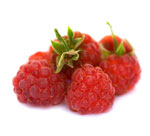Lipid management challenging, but necessary, for prevention of CVD in women
Posted by: admin on: October 17, 2011
Controlling lipid levels in women with cardiovascular disease can be difficult due to a number of challenges, such as unclear guidelines and adverse reactions to medications
-Team@CMHF
- The updated 2011 guidelines from the American Heart Association are the most user-friendly for lipid management because they can easily be applied to real-world clinical scenarios
- According to Dr Meagher the updated AHA guidelines for the prevention of CVD in women refer to at-risk or high-risk patients, whereas others use terms such as very high, high, moderately high risk or moderately low risk, which leaves a lot of room for interpretation
- It was also noted that women have different lipid profiles than men can create difficulties.
- Dr Meagher said one common gender difference is the prevalence of what’s bad in a lipid panel other than LDL, eg in certain situations, an elevated non-HDL cholesterol may become an appropriate secondary target for intervention.
- In this setting, whatever level you set for the target goal for LDL, the non-HDL target should be 30 points higher.
- Lifestyle changes, such as increased physical activity, improved diet and decreased alcohol consumption, are most important in managing lipid levels, according to Meagher.
- Physicians have other options as well, including treatment with statins and niacin.
- Unfortunately, several issues prevent women from using these medications.
- Meagher advised physicians to be prepared to discuss the risk-benefit profile of the drug in detail. In terms of adverse effects, the most common reason for discontinuation of statin therapy is myalgia.
- Myopathy is also a concern more commonly seen in patients taking other medications and in elderly or frail patients.
- However, physicians can work with patients to create a strategy to overcome these hurdles.
- Educating patients thoroughly on potential adverse effects is beneficial, Meagher said.
- She highlighted niacin as an effective alternative to statins, but noted that many patients still struggle with tolerability issues.
- Meagher also cited cholesterol absorption inhibitors, fibric acids and omega-3 fatty acids as therapeutic options, yet explained that statins and niacin remain the best choices.
For further reading log on to: http://www.cardiologytoday.com/view.aspx?rid=88079
Search
- drchasrani: Difficult to get such a data, authenticated at that. Try Times of India online library
- rakesh pore: hi, where can i get genuine information about "10 most common drugs sold in india?" i want it for a local project
- nilesh dutta: sir, Plz give detail about MBA Sports Management Thanks and Regards


Leave a Reply